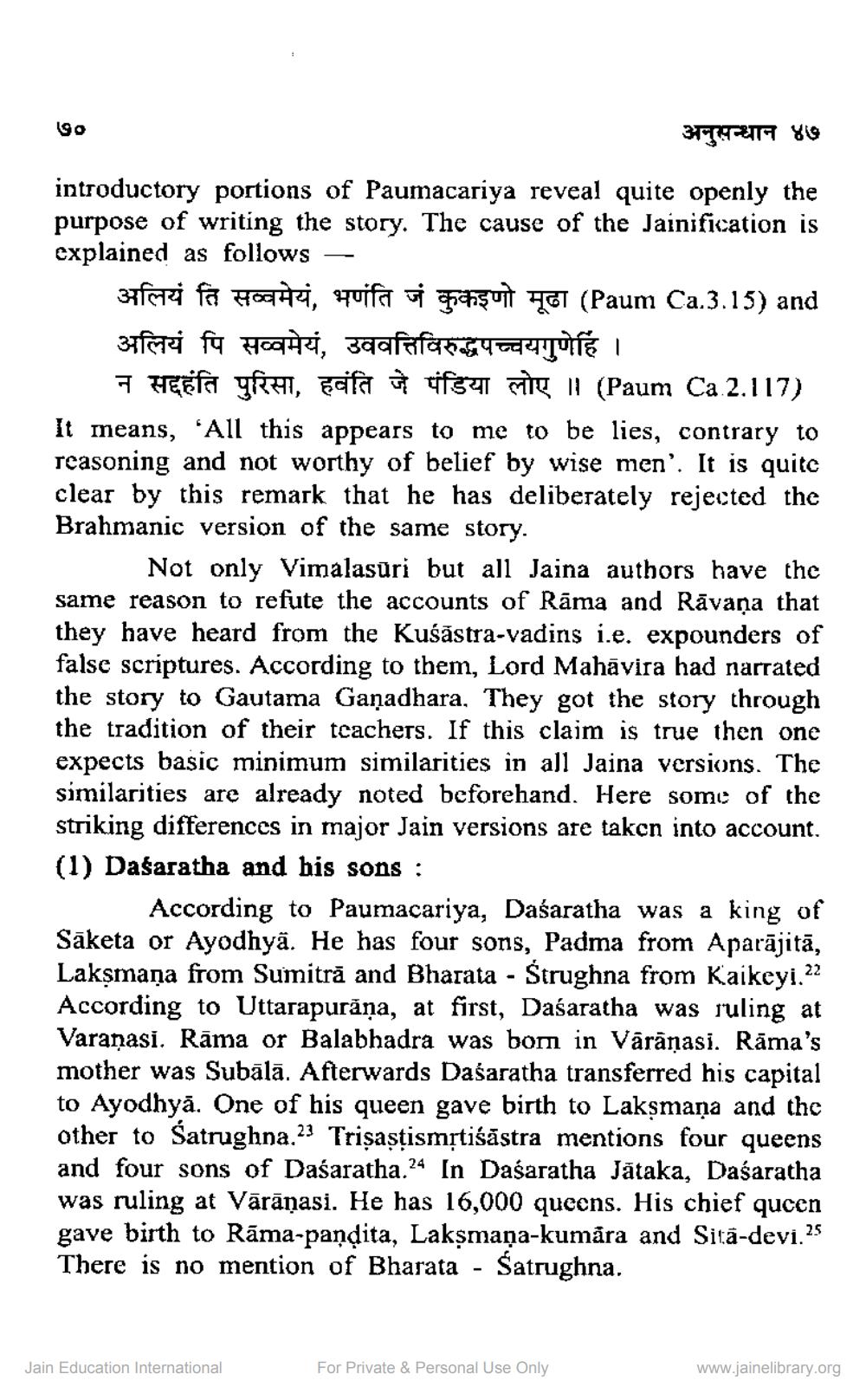________________
GO
अनुसन्धान ४७
introductory portions of Paumacariya reveal quite openly the purpose of writing the story. The cause of the Jainification is explained as follows --
fraifa Hoqhi, wuif op groposuit yet (Paum Ca.3.15) and अलियं पि सव्वमेयं, उववत्तिविरुद्धपच्चयगुणेहि ।
7 HEEFS fH, Ecife Wufsy my 11 (Paum Ca 2.117) It means, 'All this appears to me to be lies, contrary to reasoning and not worthy of belief by wise men'. It is quite clear by this remark that he has deliberately rejected the Brahmanic version of the same story.
Not only Vimalasuri but all Jaina authors have the same reason to refute the accounts of Rāma and Rāvana that they have heard from the Kuśāstra-vadins i.e. expounders of false scriptures. According to them, Lord Mahāvira had narrated the story to Gautama Ganadhara, They got the story through the tradition of their teachers. If this claim is true then one expects basic minimum similarities in all Jaina versions. The similarities are already noted beforehand. Here some of the striking differences in major Jain versions are taken into account. (1) Daśaratha and bis sons :
According to Paumacariya, Daśaratha was a king of Sāketa or Ayodhyā. He has four sons, Padma from Aparājitā, Lakşmaņa from Sumitrā and Bharata - Strughna from Kaikeyi.22 According to Uttarapurăņa, at first, Daśaratha was ruling at Varanasi. Rāma or Balabhadra was bom in Vārāṇasi. Rāma's mother was Subālā. Afterwards Daśaratha transferred his capital to Ayodhyā. One of his queen gave birth to Laksmana and the other to Satrughna.23 Trişastismstiśāstra mentions four queens and four sons of Daśaratha. 24 In Dasaratha Jätaka, Daśaratha was ruling at Vārāṇasi. He has 16,000 queens. His chief qucen gave birth to Rāma-pandita, Lakşmaņa-kumāra and Sita-devi. 25 There is no mention of Bharata - Śatrughna.
Jain Education International
For Private & Personal Use Only
www.jainelibrary.org




